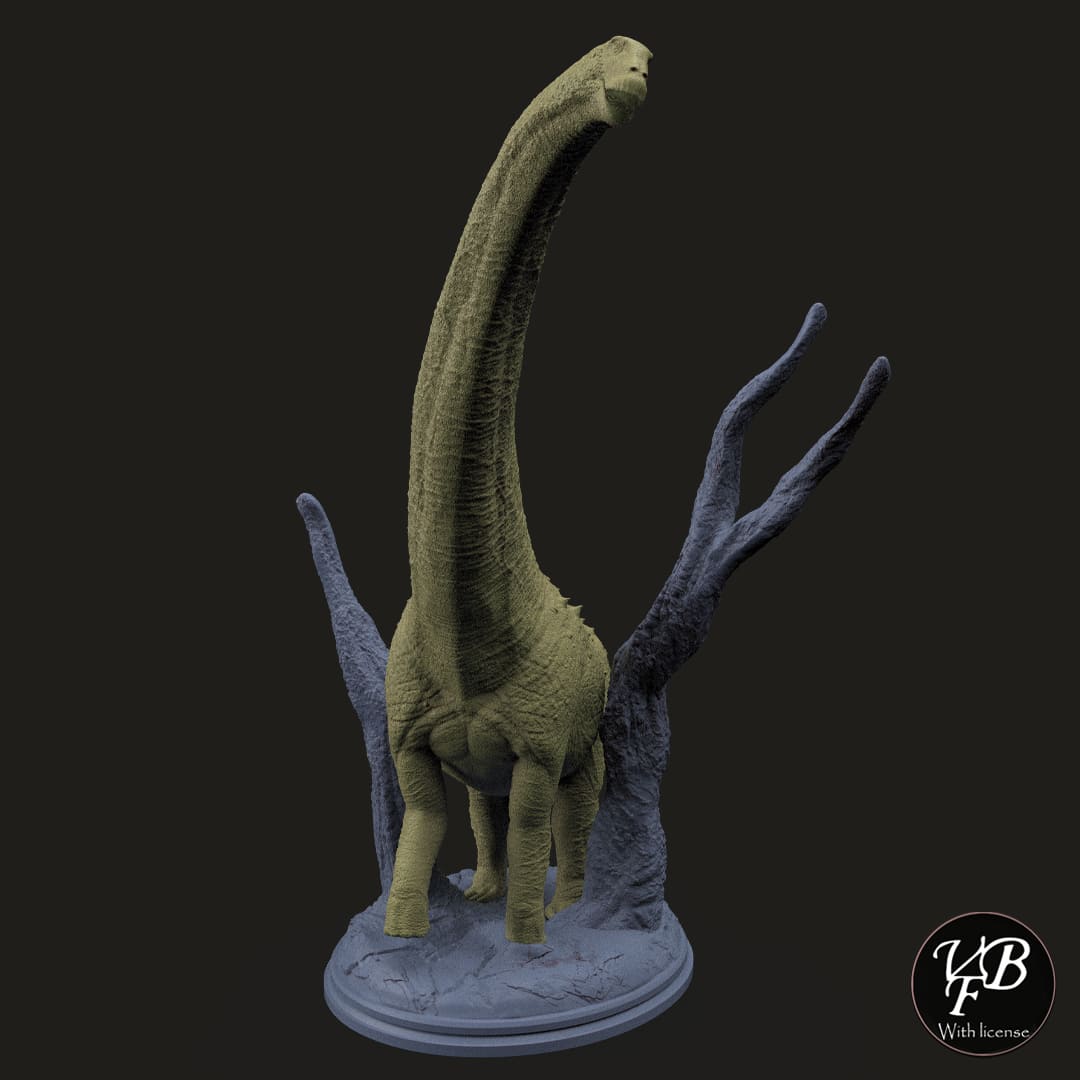





Patagotitan mayorum
Do you want another scale?
Contact us and we will make it possible!
How will you receive your replica?
In the unprimed and primed variants, you will receive the complete replicas except for the large models, where you will receive an assembly kit.
In the hand-painted variant, the replicas will be delivered complete.
How does the painting service work?
We created a private chat for you where you will have direct communication with our painter , being able to choose your preferred color schemes and follow the hand painting process closely.
Pairs well with

Patagotitan mayorum
If you have any questions, you are always welcome to contact us. We'll get back to you as soon as possible, within 24 hours on weekdays.
Shipping Information
Visit our shipping policy page to find all the information.
Customer Support
Give us a few details and we’ll offer the best solution. Connect by chat or email.
We are available 24/7.
FAQ’s
Visit our FAQ's page to find answers to common questions.
Contact Us
We'd love to hear from you. We are here to help. Visit our contact page to send us a message.
Product details
The Patagotitan mayorum is characterized by its colossal size. Estimates based on recovered fossils suggest that this sauropod could reach a length of up to 37 meters and weigh around 70 tons, placing it among the largest known land animals. Its skeleton shows the typical characteristics of titanosaurs, with a long and robust neck, a massive body and an equally long tail that helped it maintain balance.
The neck of the Patagotitan mayorum, composed of elongated and light cervical vertebrae, allowed it to reach great heights to feed on vegetation located in the treetops. Its herbivorous diet consisted mainly of plants that grow at high altitudes, possibly supplemented by understory plants that it could reach effortlessly thanks to its imposing size.
The limbs of Patagotitan mayorum were colossal, with wide, strong leg bones to support its enormous mass. These limbs were relatively straight and columnar, an adaptation that efficiently distributed the body's weight, allowing it to move slowly but steadily through the terrain of ancient Patagonia.
The structure of the skull and dentition of Patagotitan mayorum, although less known due to the scarcity of cranial remains, is inferred to have been adapted for a diet of leaves and fibrous plants, as is common in sauropods. The spoon-shaped teeth were designed to uproot and shred vegetation.
The discovery of Patagotitan mayorum has provided important insight into the diversity and evolution of titanosaur dinosaurs. The fossils, which include bones from various parts of the skeleton such as vertebrae, ribs and limbs, were found in an excellent state of preservation, allowing paleontologists to carry out detailed studies on their anatomy and biomechanics.
This sauropod inhabited an environment of forests and plains, an ecosystem in which it coexisted with other herbivorous and carnivorous dinosaurs, as well as a variety of prehistoric flora and fauna. Its monumental size probably gave it a competitive advantage in searching for food and defending against predators.
Approximate measurements of Patagotitan:
- Scale 1:100 Assembly kit 2 pieces
- Length 293 mm
- Height 169 mm
- Width 77 mm
- Snout-tail length 370 mm
- Includes ultraviolet putty sealing joints same replica material
- Scale 1:35 Assembly kit 5 pieces
- Length 837 mm
- Height 482 mm
- Width 218 mm
- Snout-tail length 1060 mm
- Includes ultraviolet putty sealing joints same replica material
- Painted 1:35 scale replicas will be shipped in custom-made wooden boxes for added protection during shipping.
Information about aftershocks
Collector's item ; Hyper-realistic replica, highly detailed and with a high degree of scientific precision.
Made to scale, prototyped in resin and with a scenic base in most of the models offered. If you like miniatures, both for collecting and for painting, we offer you a wide variety of scale replicas; All of them related to dinosaurs, extinct prehistoric fauna and current fauna.
So if you love dinosaurs and animals as much as we do, this is your favorite store to collect and paint them :)
We are authorized distributors of all the replicas and figures we offer. We use 3D printers with 8K - 14K resolution, and high-quality resins with additives to improve hardness and flexibility, thus offering replicas of impeccable quality.
Different scales will be used to make the replicas (depending on the size of the species), although we are open to making other suggested scales upon request as long as they fit in our printing trays, for which you will have to contact us via email and request the required size.
Replicas are supplied with the option of airbrush priming in dark grey. If you require another colour, please let us know which one you prefer in the box with special instructions for the seller. Without priming, we do not guarantee that the resin will accept paint.
We also offer the option of choosing a professionally painted replica, which is agreed upon throughout its development with the painter, through a private chat available.
Complete replica (one piece): We supply complete replicas in those models that are small, and models that are medium, large or not very bulky, will have the prerogative of being presented as a complete replica or assembly kit as the case may be.
Complete replicas will be supplied separately from their base.
Replica assembly kit: We supply replicas whose models are large, very large or bulky, only with this option.
The indicated replicas (generally composed of base, head, body and tail) will come prepared for the subsequent assembly that will be required by the client, by sanding, putty, adhesive or technique chosen by the client.
All replicas are thoroughly inspected before shipping and will be carefully packaged to prevent damage during transport.
Information about the models
The poses of the models aim to represent each character in the most scientifically viable way, thus revealing the life and customs of prehistoric and modern fauna.
Each character has its own personality and develops in different life scenarios; birth, adolescence and play, hunting, feeding, fighting, courtship, death and many other scenes from their daily life, always from the creative perspective of their designers.
Handmade
All orders are individually prepared on the cutter for subsequent prototyping, obtaining a resin part that will require post-processing by manual and ultrasonic cleaning, support removal, ultraviolet curing, labeling and packaging.

We are authorized distributors
We offer both our own physical replicas and those that have been modeled by many of the best 3D designers, in order to offer you the greatest possible variety.
Frequently Asked Questions
If you have any questions about products, orders or shipping, please read our FAQ page to learn more.


